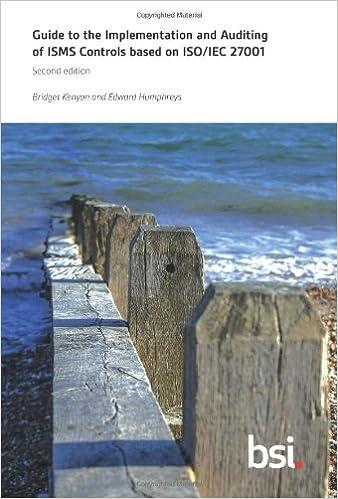Question
BUSINESS LAW QUESTION: In August 2018, Mark and Wendy, friends who shared their love of healthy foods and nutrition, opened up a health food grocery
BUSINESS LAW QUESTION:
In August 2018, Mark and Wendy, friends who shared their love of healthy foods and nutrition, opened up a health food grocery in Chicago selling organic and environmentally conscious foods and nutritional supplements. Wendy had no previous experience in retail, but Mark worked for a long time as a manager at a Whole Foods. Wendy provided $100,000 in capital contribution to start, and she and Mark agreed that in lieu of his capital contribution in cash, Mark would run the day-to-day operations, and that they "would be equal partners." The business was popular and profitable, and operated under the name "M&W Health Foods" (M&W). Although Mark and Wendy did not have a written partnership agreement, the business was a success, and they shared in the profits and liabilities equally. From day one, M&W rented the building that the store was located in. Wendy helped throughout the store only when needed at first, but Mark ran the store operations, including the hiring and buying. By the end of the first year, both Mark and Wendy grew comfortable in Wendy's role as more of a "silent partner," although she and Mark spoke periodically to discuss the business. After business turned promising enough to plan for M&W's longer term business prospects, Mark and Wendy wanted to buy the building they were in. Mark asked the owner of their building, an elderly gentleman who talked about moving closer to his kids in Florida, whether he would sell the building to them. Mark asked him several times over a period of two years, but the owner repeatedly said the building was not for sale. One month ago, the building owner visited the store and said to Mark, "I'm planning to retire and would like to see if you're still interested in buying the building. You've been such a good tenants. I'll sell the building below market value if you still want it." Mark replied, "Yes, but may we have a week to think about it?" The building owner agreed. Five days later, Mark texted Wendy the following: Hey W - I've been doing a lot of soul searching, and decided that I am withdrawing from our partnership. I will wind up the partnership's business and send you a check for half your share. I promise to do this fairly and apologize for telling you this over text. Wendy did not reply. Without letting Wendy know, Mark called the building owner five minutes after he sent the text to Wendy and made an offer for the building. The building owner accepted, and he and Mark entered into a contract for the purchase/sale of the building. Four weeks later, Mark took ownership and title to the building, and two weeks ago, Mark sent to Wendy a check for half the total dissolution distribution and explained everything to Wendy in a letter, in which he included a full accounting of dissolution. After receiving the check, Wendy sent Mark the following text: Dude - WHAT?! I got your check, but I'm not cashing it. I never agreed to end the partnership. Not right that that you did this without talking to me first! And then purchased OUR building without me! It is OUR building, so you should the title to the building should be in OUR partnership. Can you even end the partnership by yourself? What makes you think you can do that? I paid all the money to start our business, and now you're gonna throw me over the bus like this? By giving me only half of what's left? Mark replied by text: I am so, so sorry, W. I needed a change in my life. I loved working with you, but feel like I had to do something on my own. I enjoyed our partnership, but it is dissolved, and I've moved on. Please understand and do the same. Mark then proceeded to operate the store as "M's Health Foods," with the same employees and selling the same products. Wendy sues Mark for withdrawing from the partnership and for breaching his partner duties.
QUESTION:
- Assume that Marks withdrawal was not unlawful and that the following are the valuations for winding up:
- Liabilities to creditors are $40,000;
- Outstanding receivables are $30,000; with $10,000 of this received by the time winding up is completed
- Equipment, furniture, fixtures, and stock are $300,000
- Losses are $20,000
- Wendys capital contribution totaled $100,000, and also loaned the partnership $10,000 interest-free to buy a replacement freezer.
If Mark calculated Wendys check correctly, how much was the check Wendy received?
Step by Step Solution
There are 3 Steps involved in it
Step: 1

Get Instant Access to Expert-Tailored Solutions
See step-by-step solutions with expert insights and AI powered tools for academic success
Step: 2

Step: 3

Ace Your Homework with AI
Get the answers you need in no time with our AI-driven, step-by-step assistance
Get Started


